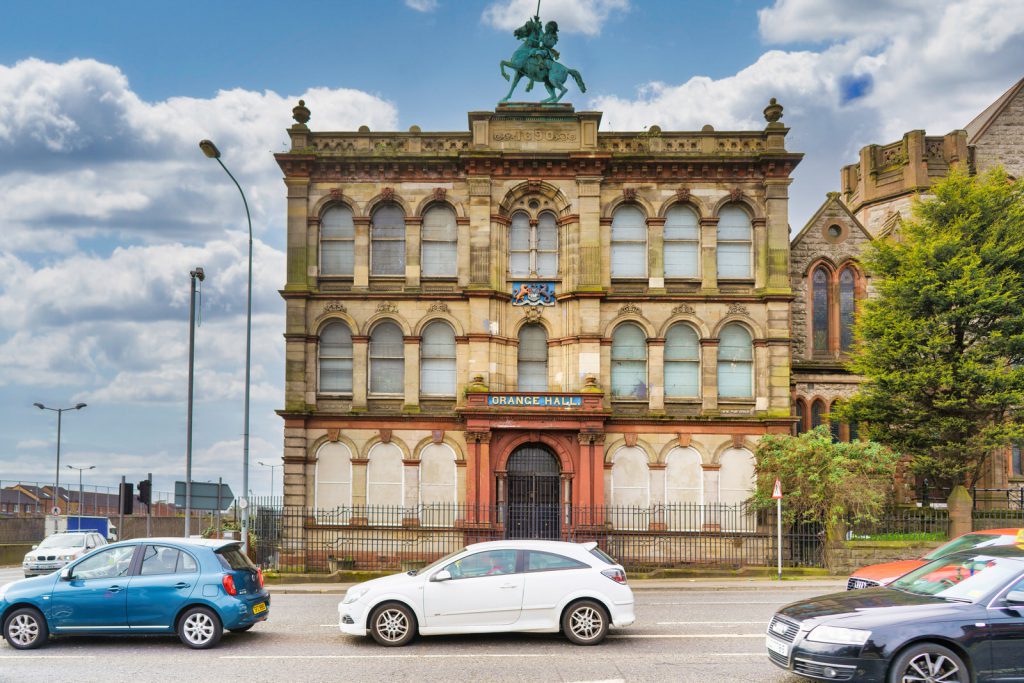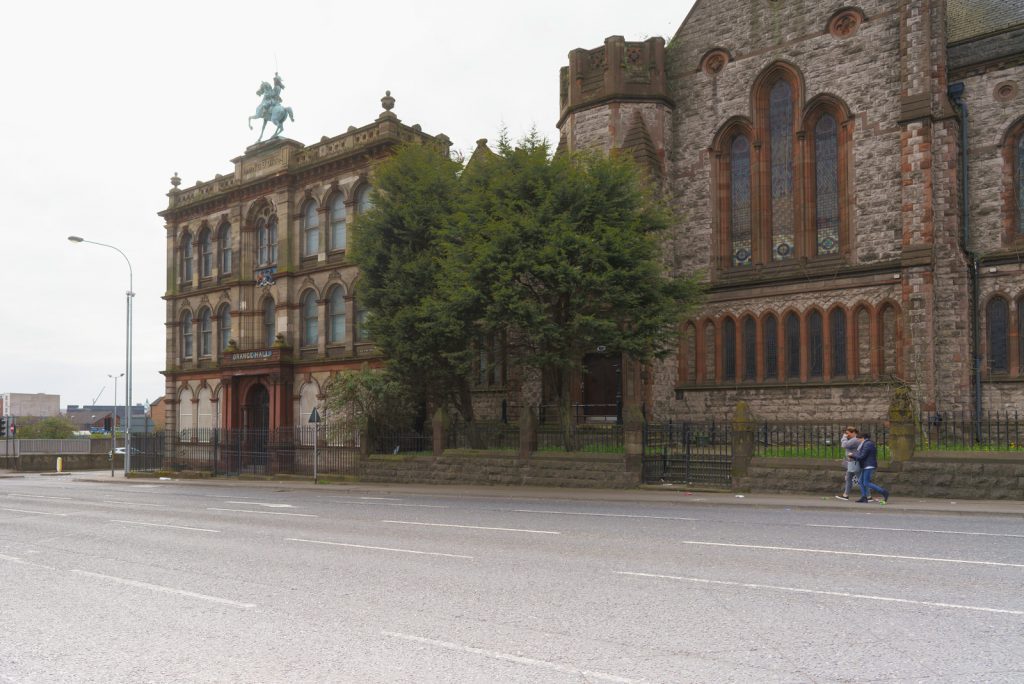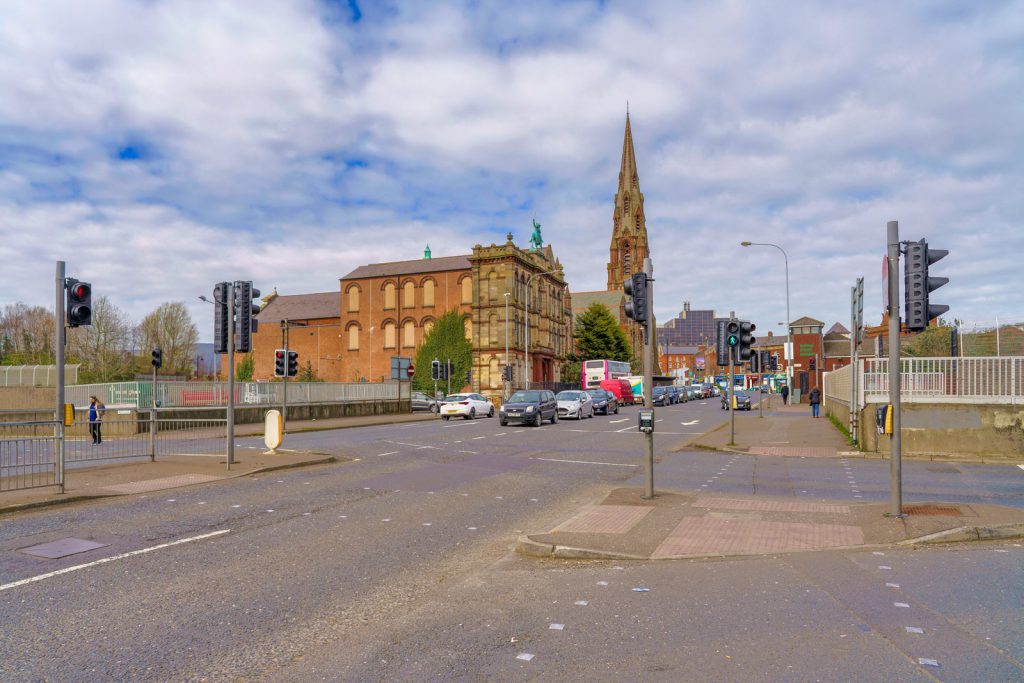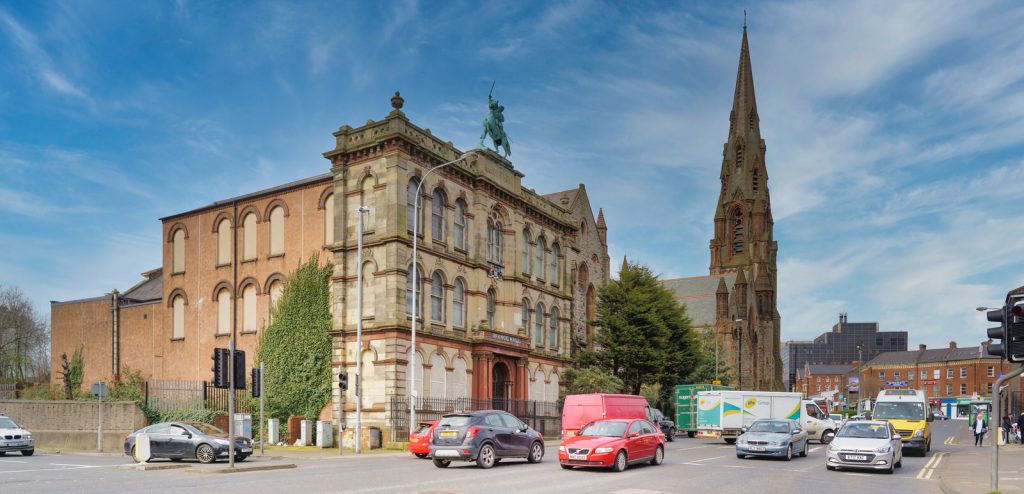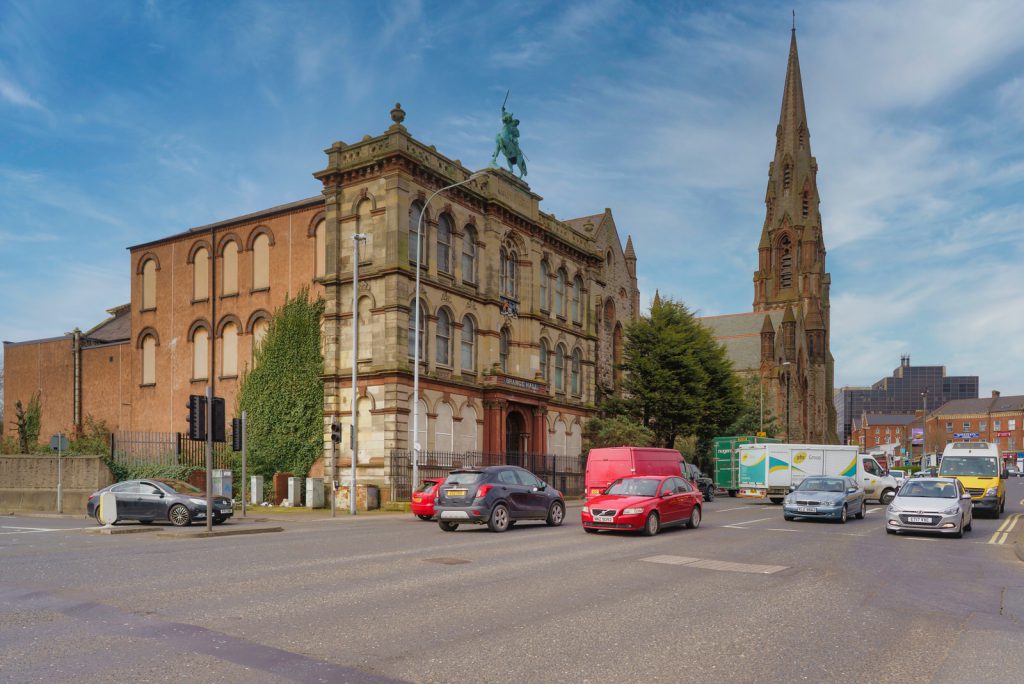AND THE DERELICT CARLISLE MEMORIAL METHODIST CHURCH
I photographed these buildings back in March 2019 but did not get the opportunity to process and publish the images until 14 October 2022. I visited the area again in 2021 and 2022 and will publish more recent photographs within the next few weeks.
The large Orange Hall on Clifton Street in Belfast first opened in 1886. It was designed and built by William Batt, a local architect who also designed many houses and villas around Malone, and the now demolished front gate lodge of Botanic Gardens. Many of the original features of this Victorian style building can still be seen today.
The building contains meeting rooms, a museum, and facilitates for educational tours to showcase the political and religious aspects of the Order.
It is the largest purpose built Orange Hall in the world, and the bronze statue on the roof (unveiled in 1889) is the only one of King William III on any Orange Hall in Ireland.
The Indian Community Centre is next door.
Carlisle Memorial Methodist Church was designed in the Gothic Revival style by noted architect W. H. Lynn and completed in 1875, the church was home to one of the largest Methodist congregations in Belfast. The sandstone and limestone exterior of the building was renovated in 1966, but the church ceased to be used as a place of worship by 1982, a consequence of the declining congregation and its location at a major interface between Catholic and Protestant populations. Previous plans to convert the church to public housing did not come to fruition. Now derelict for close to 20 years, Carlisle Memorial has suffered extensive physical degradation, and the need for action is at hand. Despite its religious associations, the building is now perceived as neutral territory in a deeply polarised area and holds symbolic potential for North Belfast in particular and the city as a whole.
